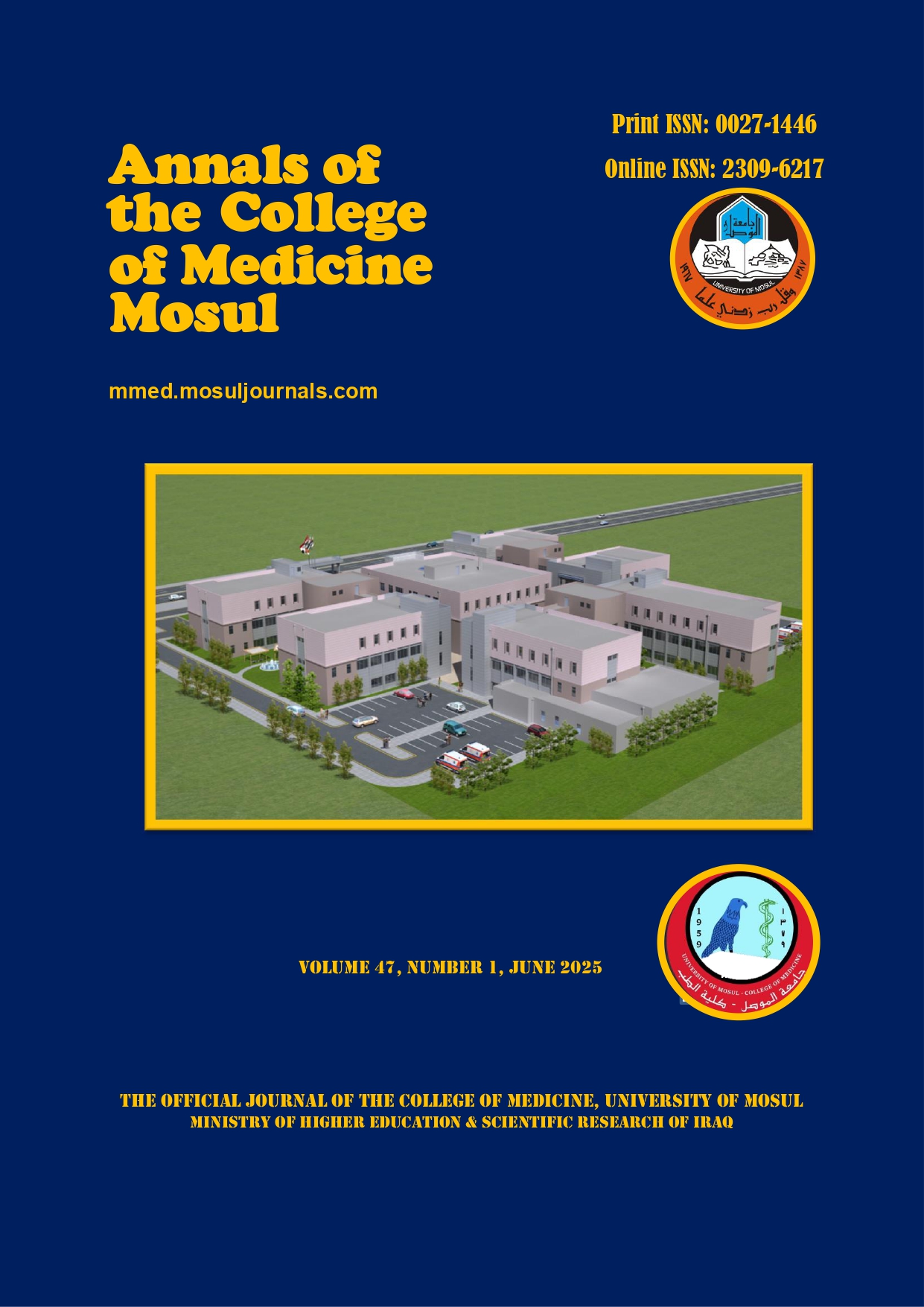Gender effect on coronary angiographic findings in evaluation of chest pain
Abstract
ABSTRACT
Objective: The primary objective of this study is to evaluate the effect of gender on angiographic findings in referred patients with chest pain and to study the gender-related differences in risk factors in patients with coronary artery disease as a secondary goal.
Design: A retrospective, clinical study of 230 patients with chest pain.
Setting: Mosul Heart Center Ibn Sina Teaching Hospital.
Patients and methods: From Sept. 1st 2011 to Jan. 31st 2012, a total of 230 (100 female, 130 male) patients with chest pain who underwent diagnostic coronary angiography in Mosul Heart Center Ibn Sina Teaching Hospital were studied retrospectively. Both the whole female population and post-menopausal females as a separate group was compared with a whole male population depending on the presence or absence of coronary artery disease identified by coronary angiography. The main outcome of cardiovascular risk factors: hypertension, diabetes mellitus, hypercholesterolemia, smoking and family history of coronary heart disease were also studied in relation to the gender.
Results: The correlation between the whole female and male populations with positive coronary angiography: 59% (59/100) vs. 89.2% (116/130) respectively, was statistically significant (p< 0.001). The correlation between post-menopausal women and whole male population with positive coronary angiography: 67.14% (47/70) vs. 89.2% (116/130) was also statistically significant (p< 0.05).
The mean age (yr) SD of whole female population with positive coronary angiography was (57.48 8.8), while it was (53.34 9.0) for male population with positive coronary angiographic findings. The correlation was statistically significant (p<0.01). The mean age (yr) SD of post-menopausal females with positive results was (59:147.04). This was also statistically significant in comparison with main age of whole male population (p<0.01). Hypertension and family history of ischemic heart disease were more prevalent in females than in males with coronary heart disease, 30 (50.8%) and 41(69.4%) versus 44(37.9%) and 60 (51.7%) respectively, this was statistically significant (p< 0.05).
Conclusions: Females with chest pain who were referred for diagnostic coronary angiography had significantly more negative angiography test than males, and the mean age of females with positive test is significantly higher than males. Hypertension and family history of ischemic heart disease were more prevalent in females with coronary artery disease than in males.
Keywords: Coronary artery disease (CAD), coronary angiography, gender effect on coronary angiography.
